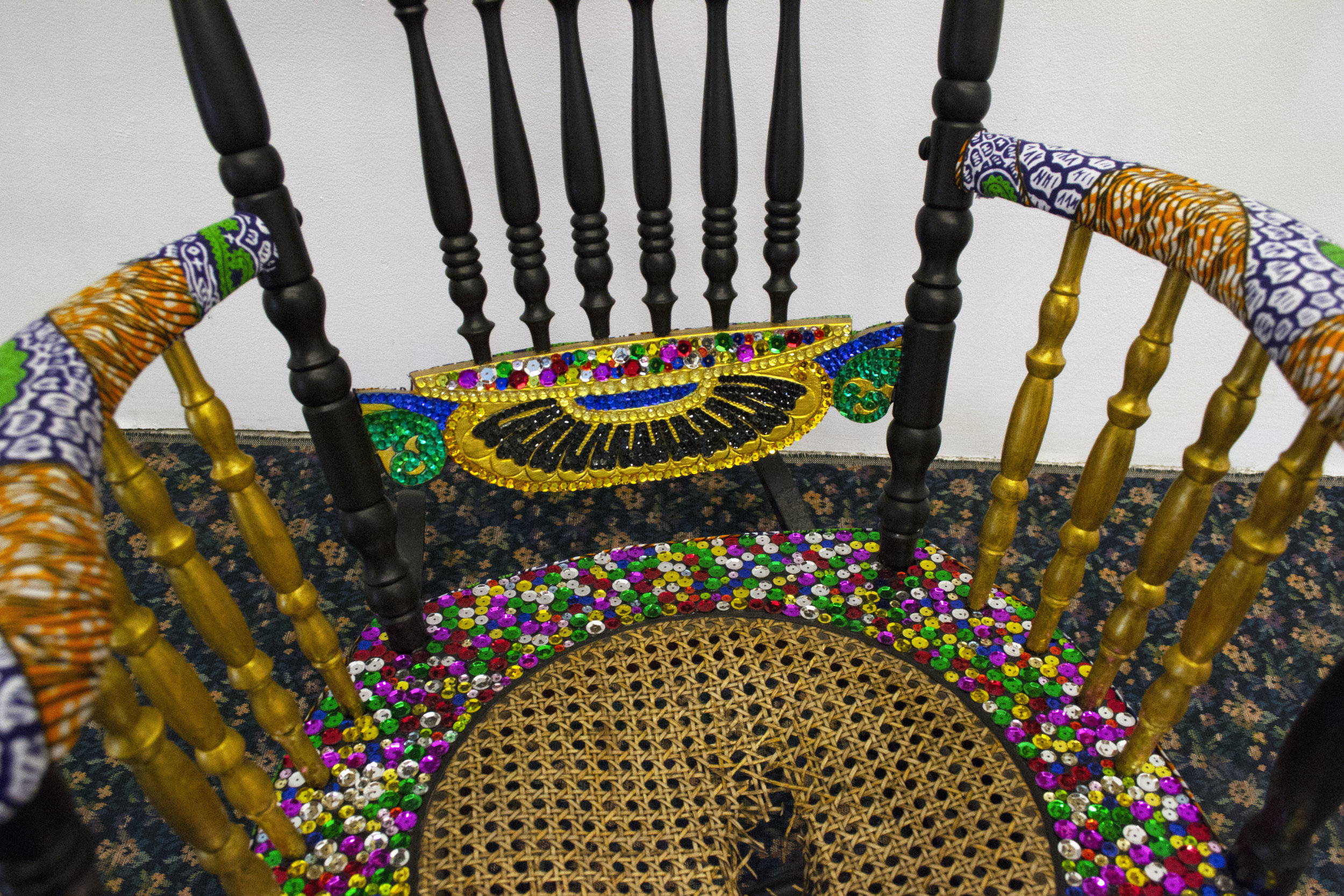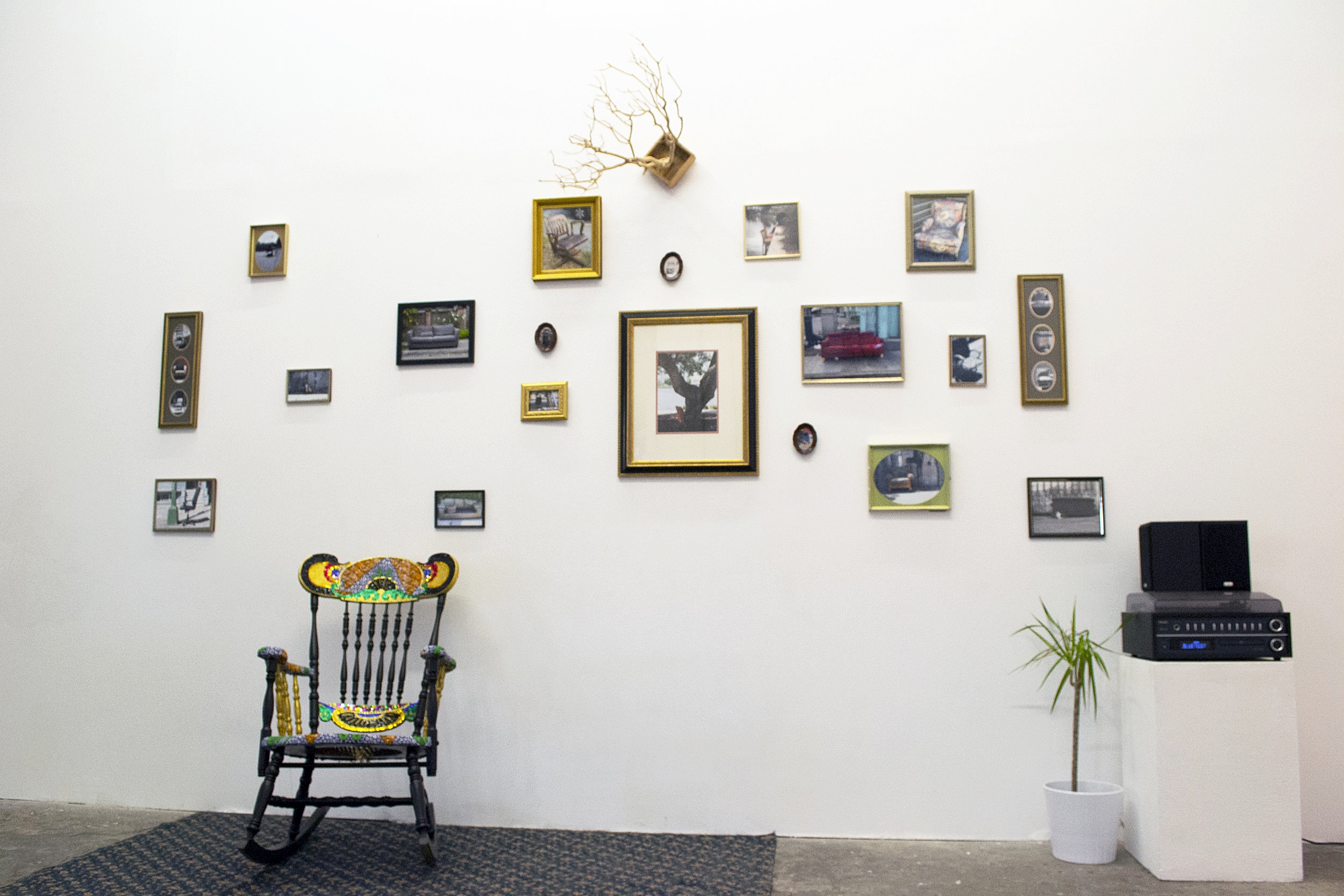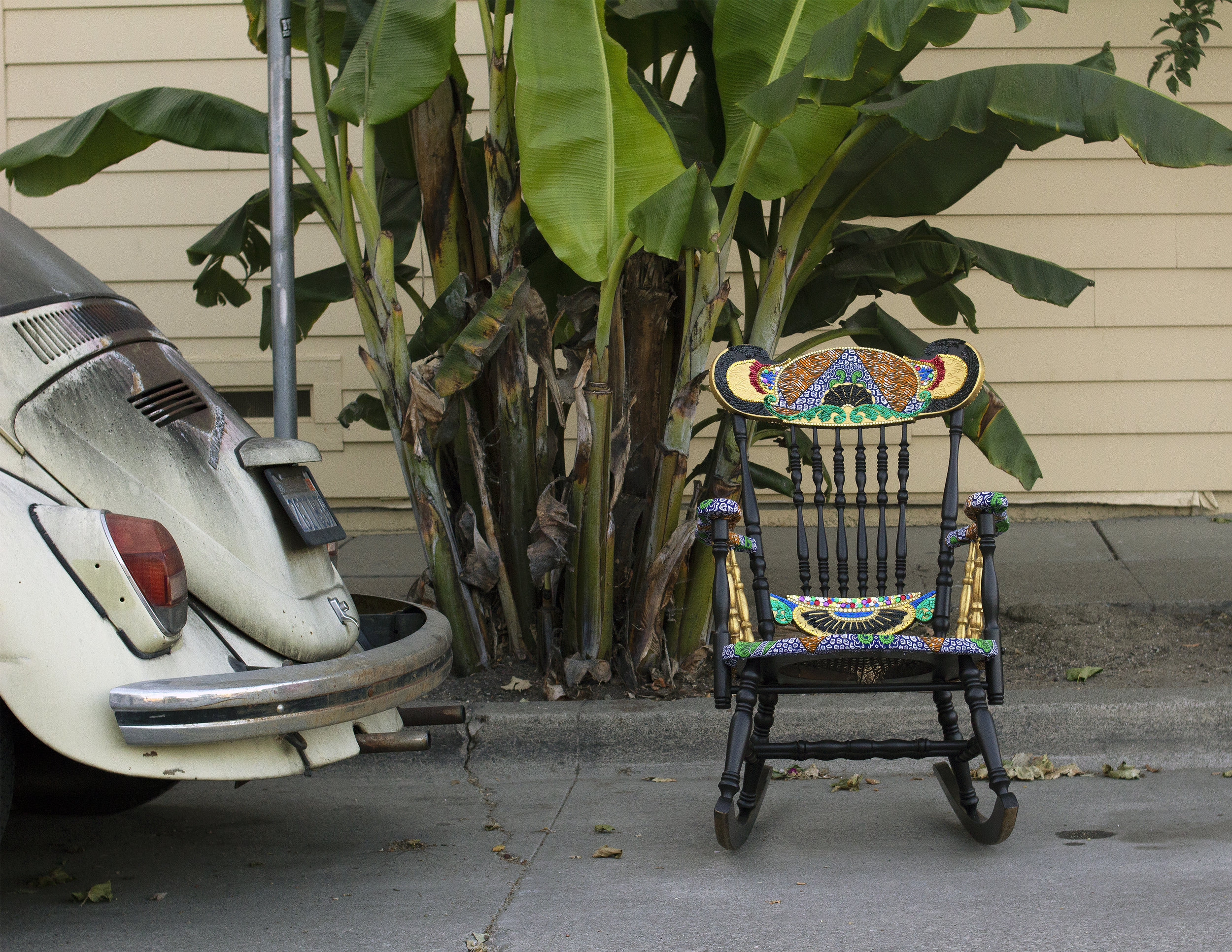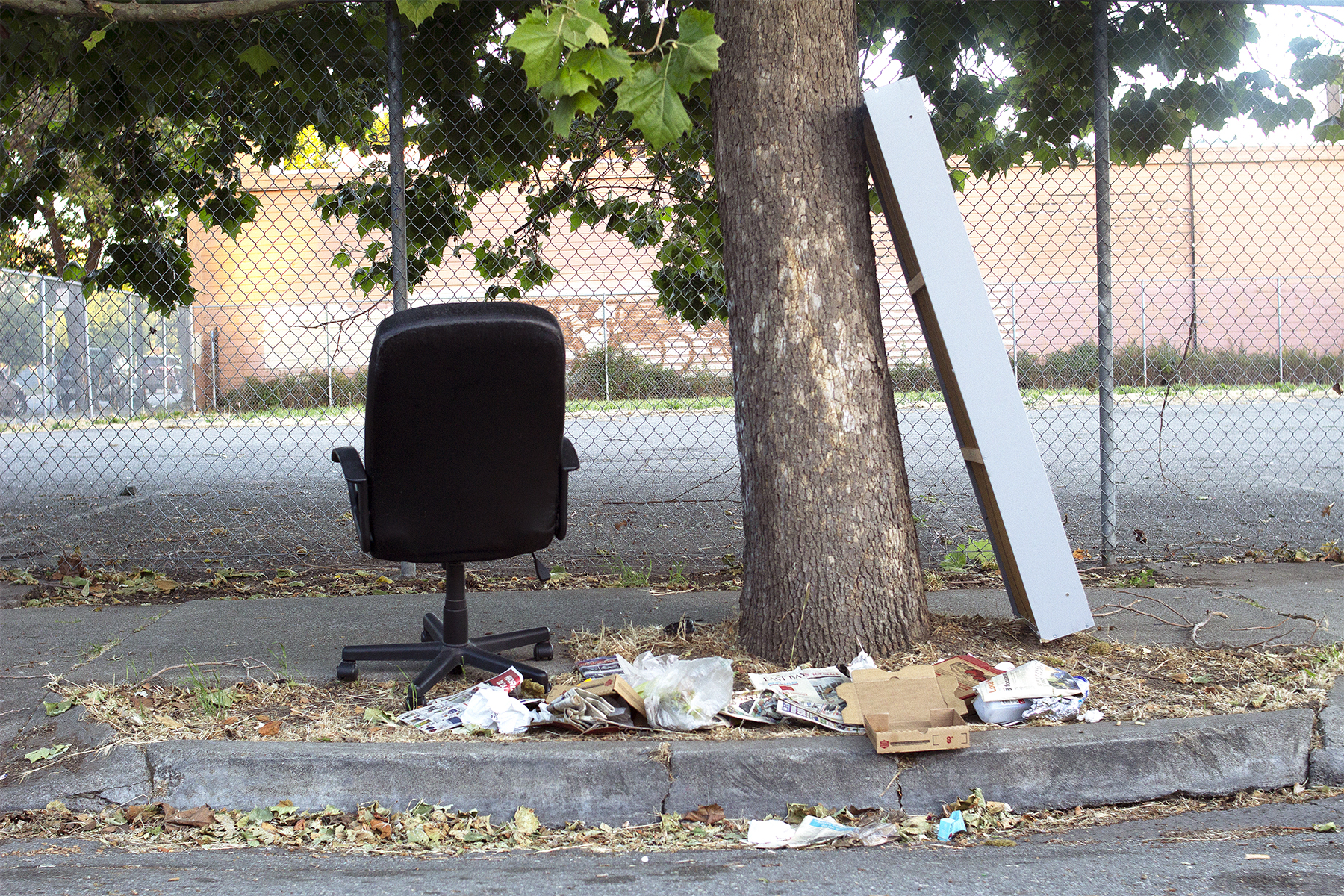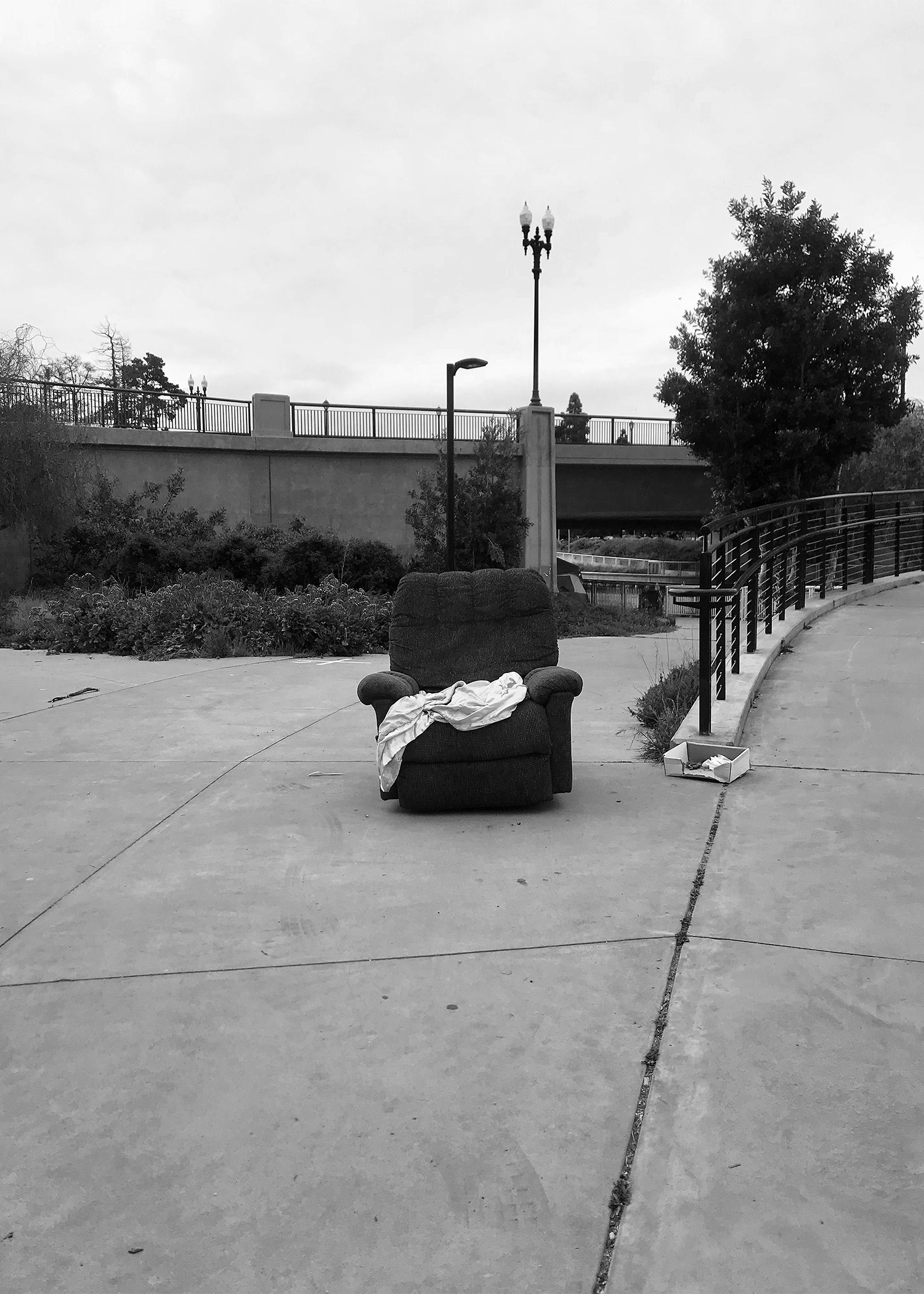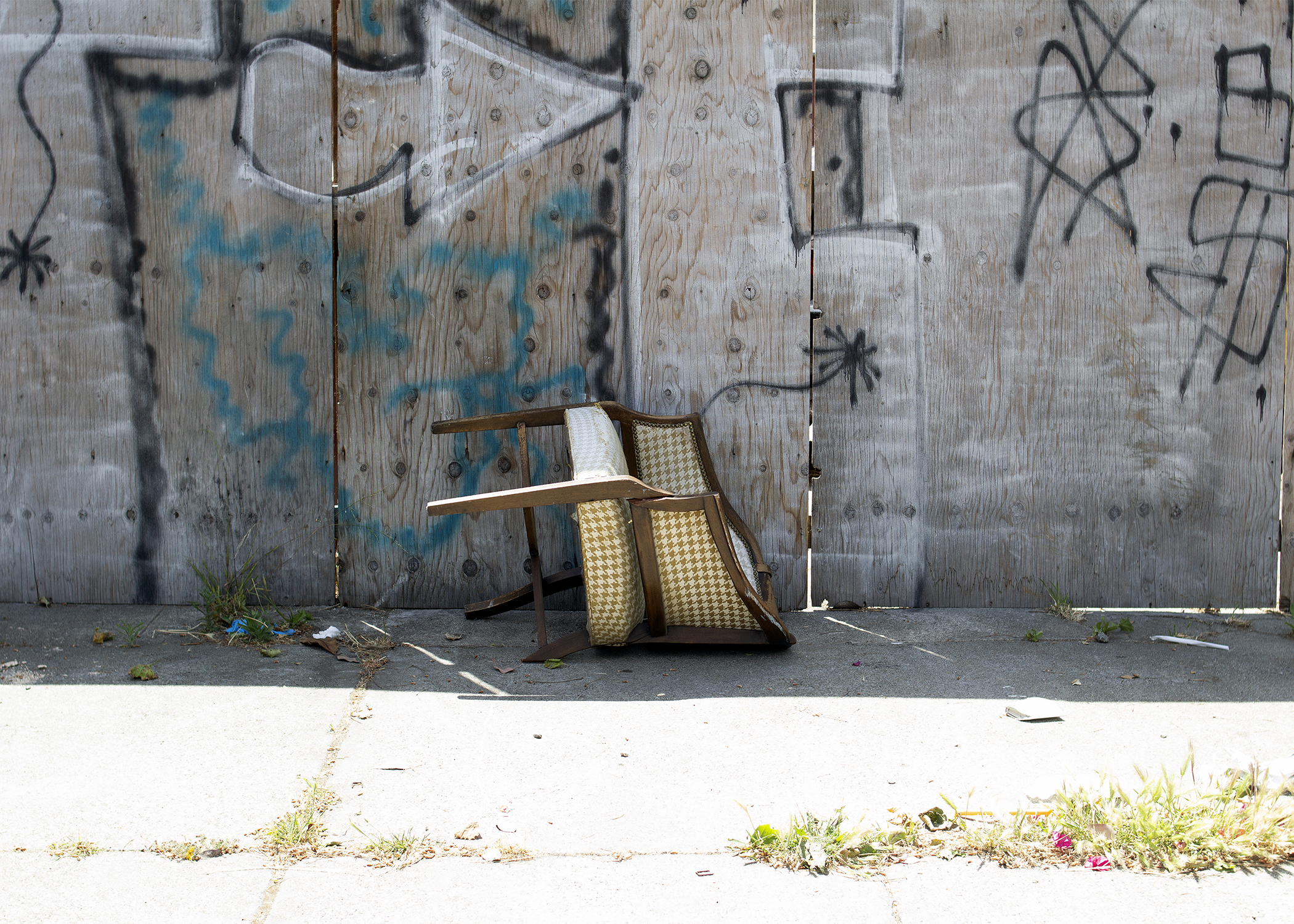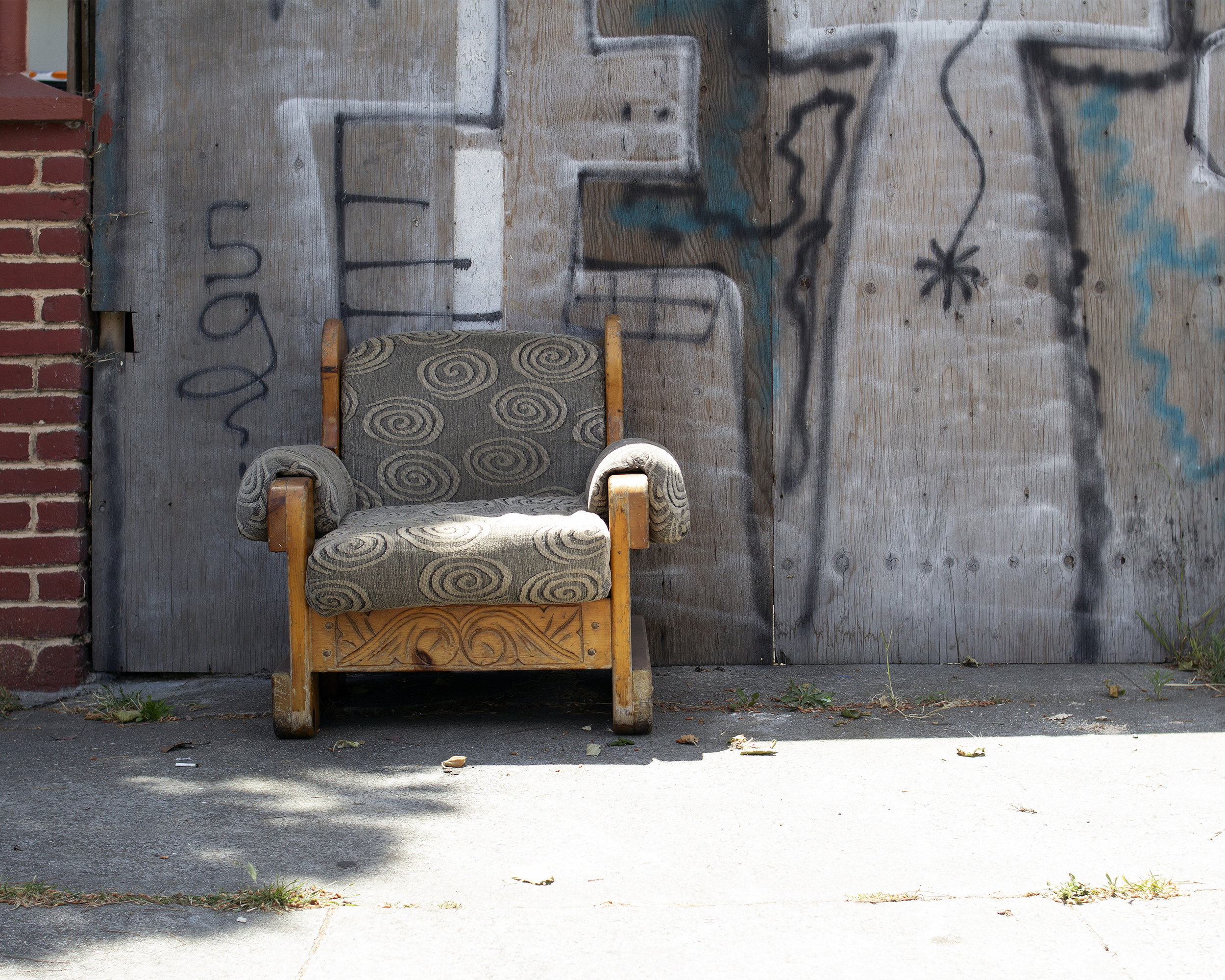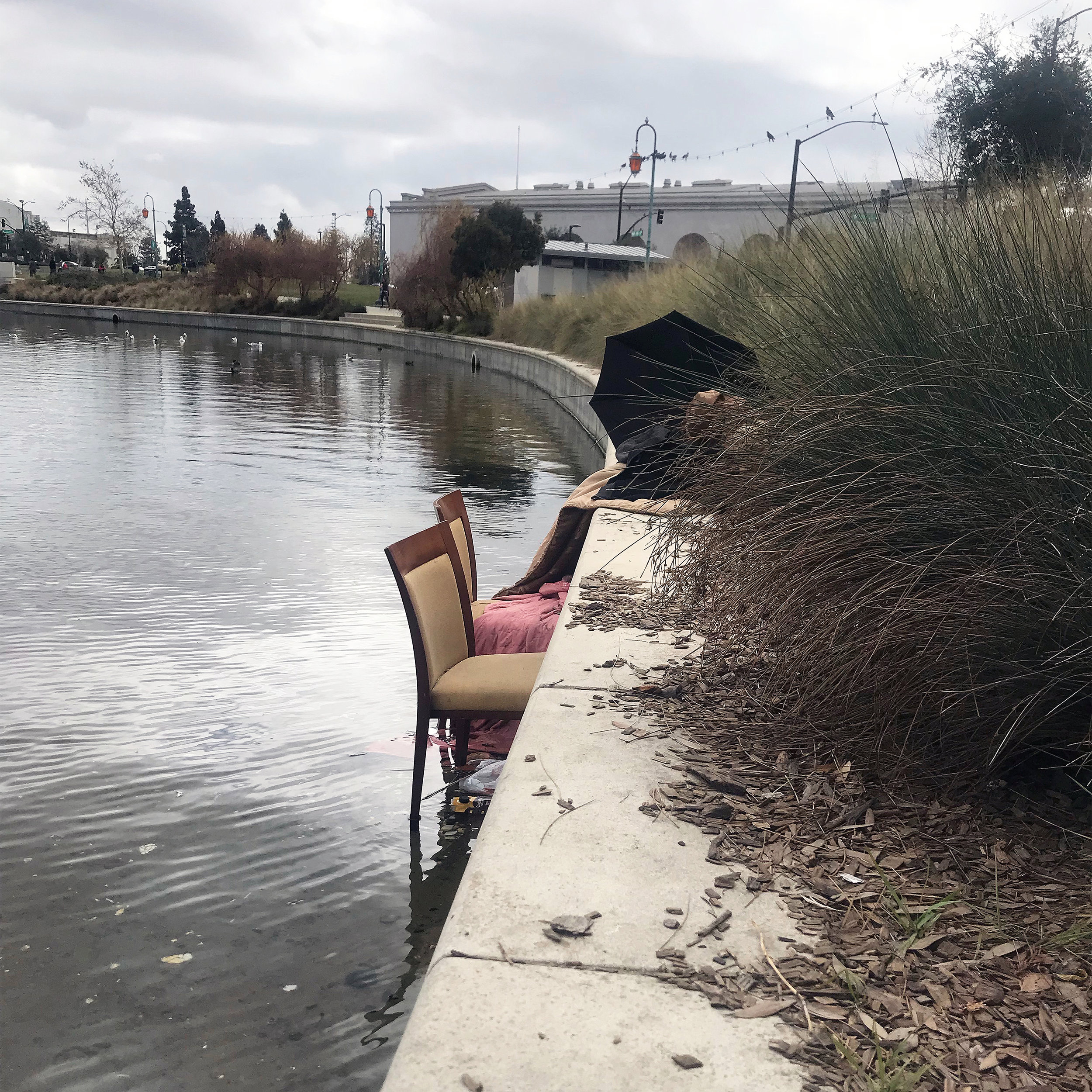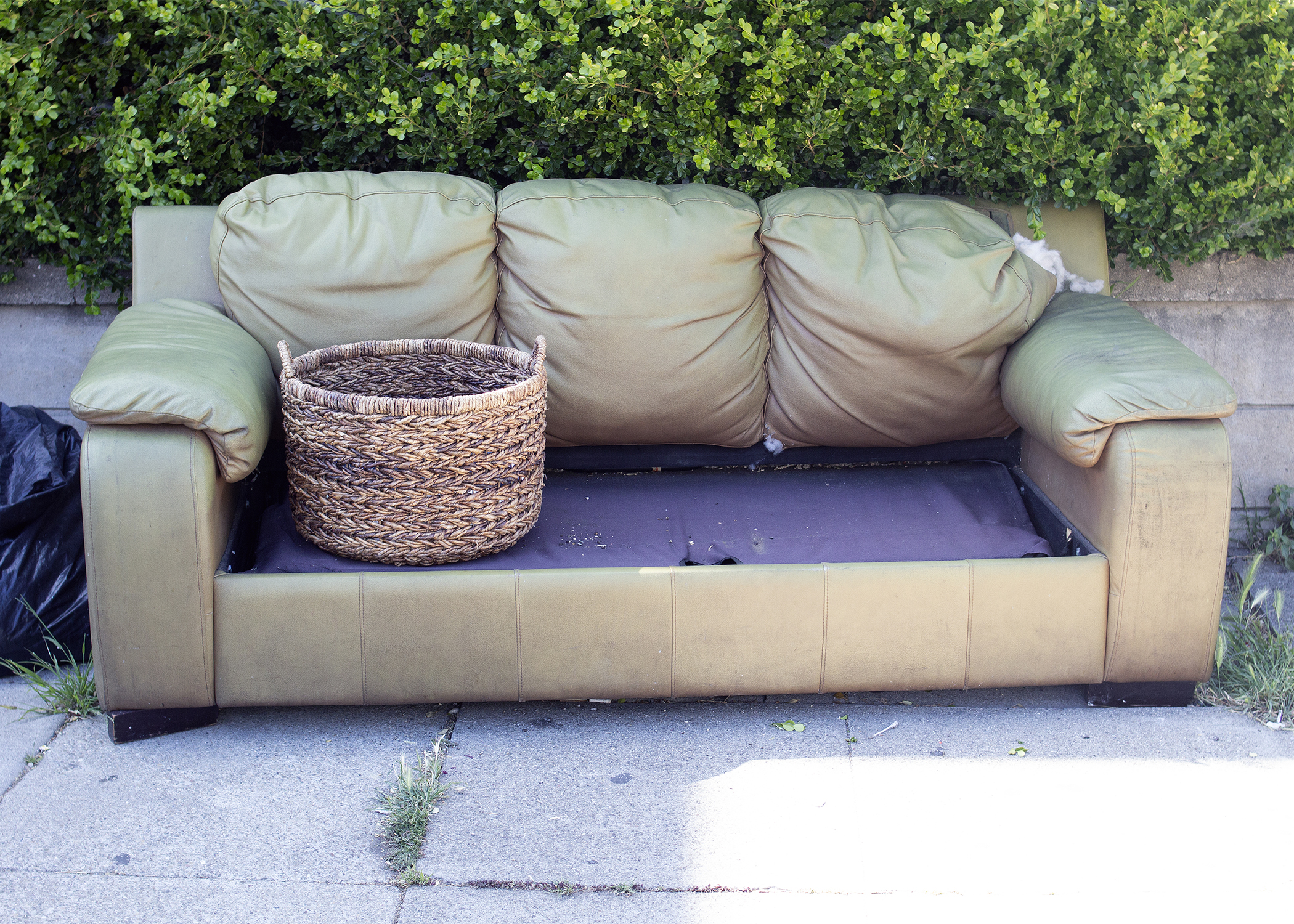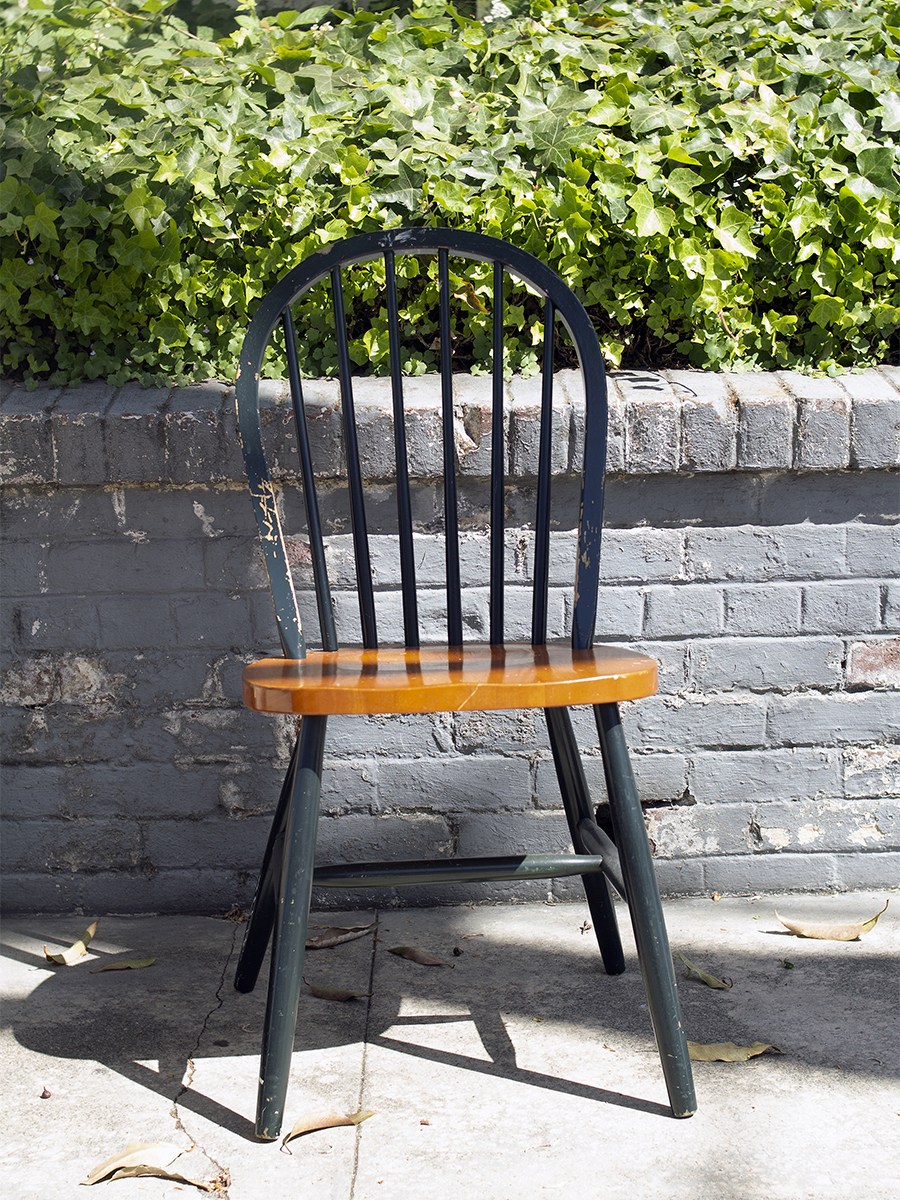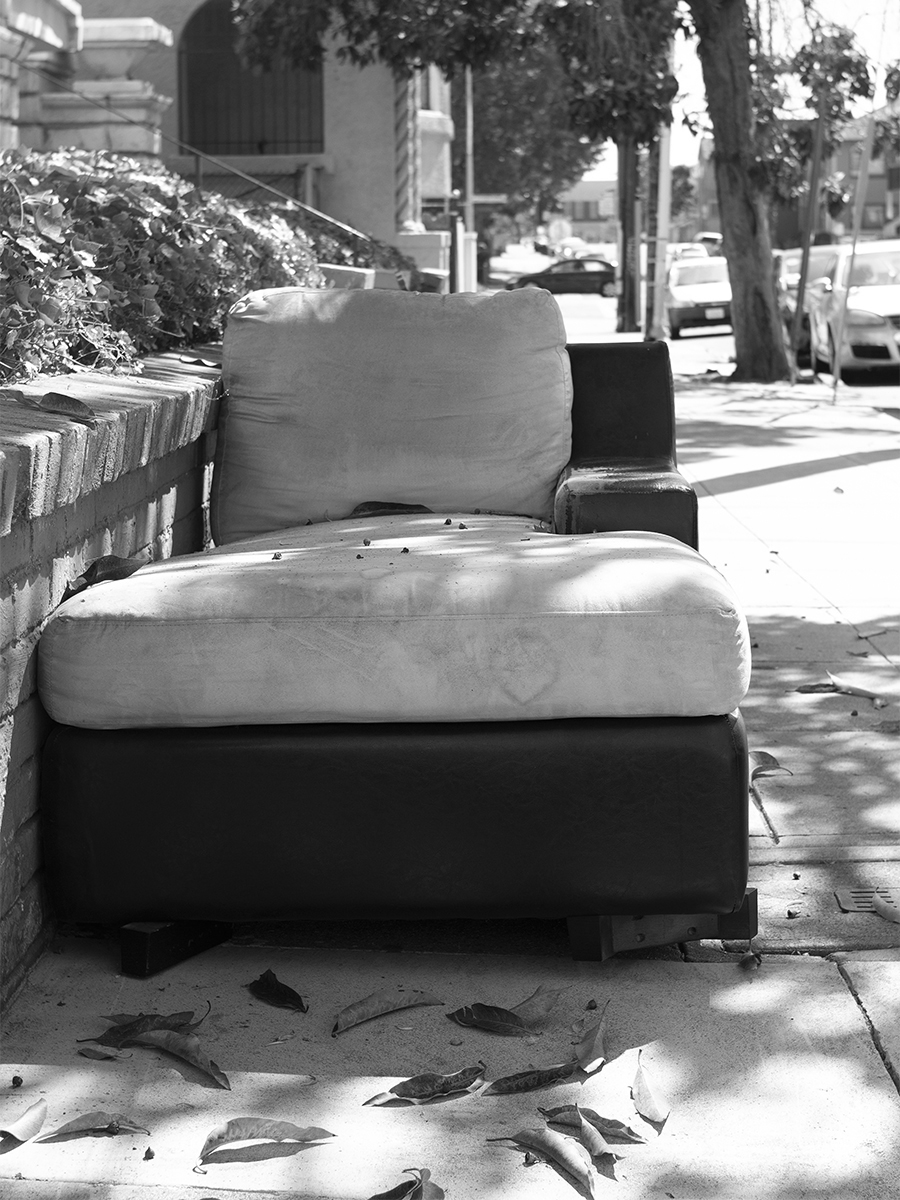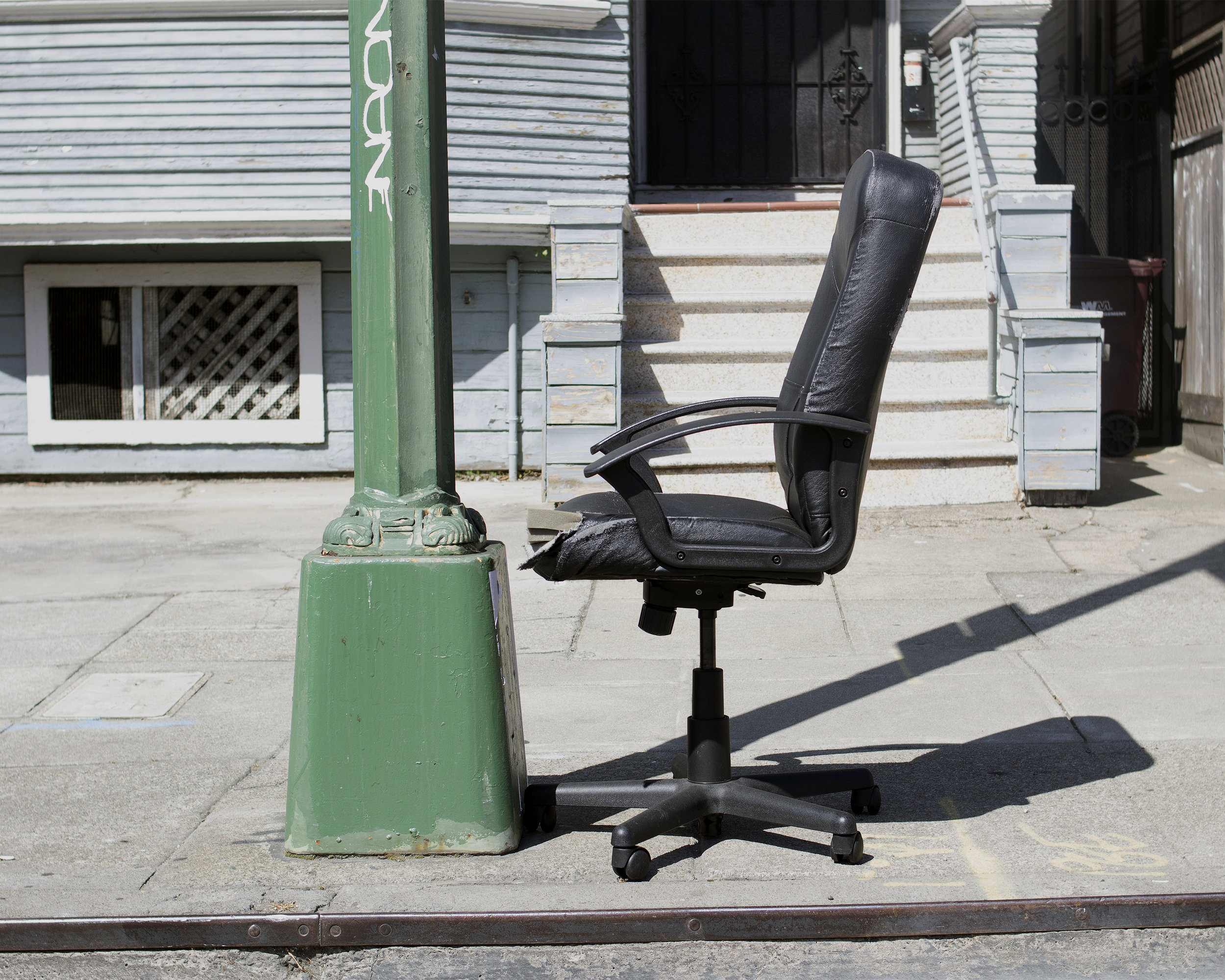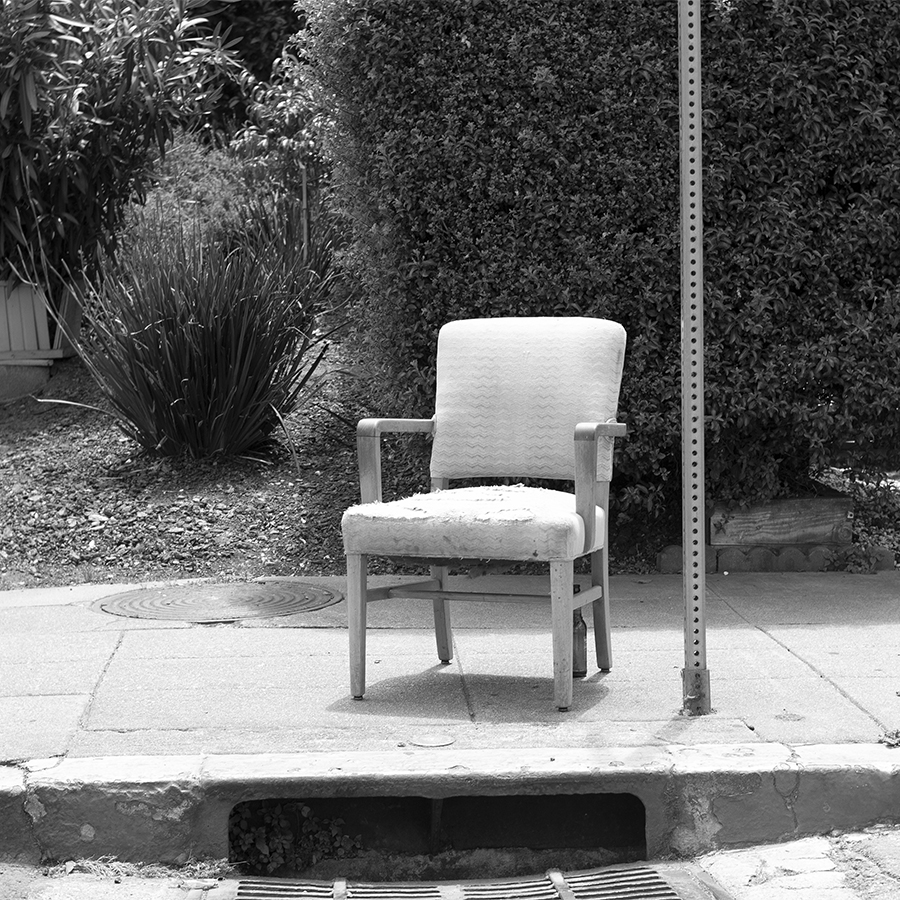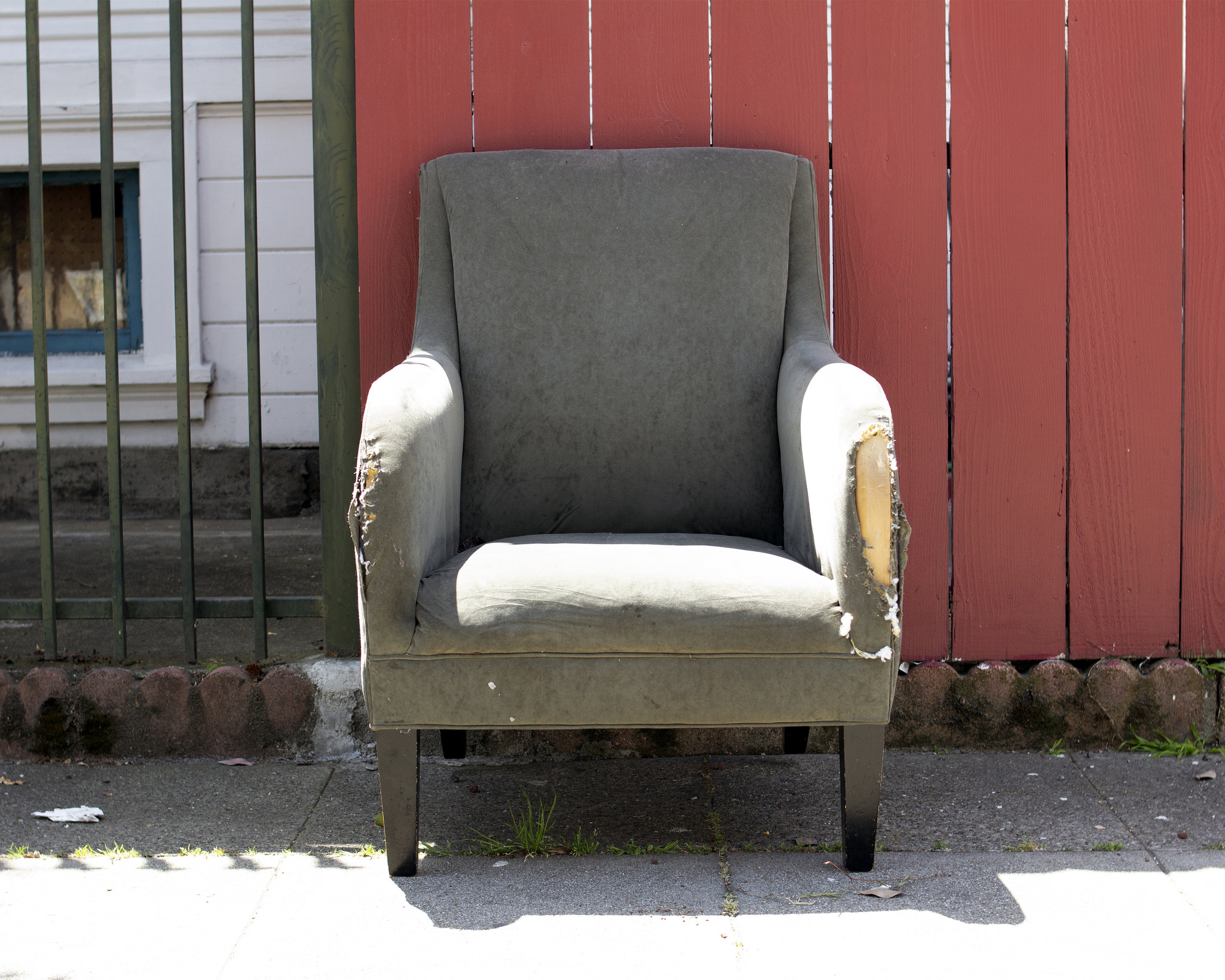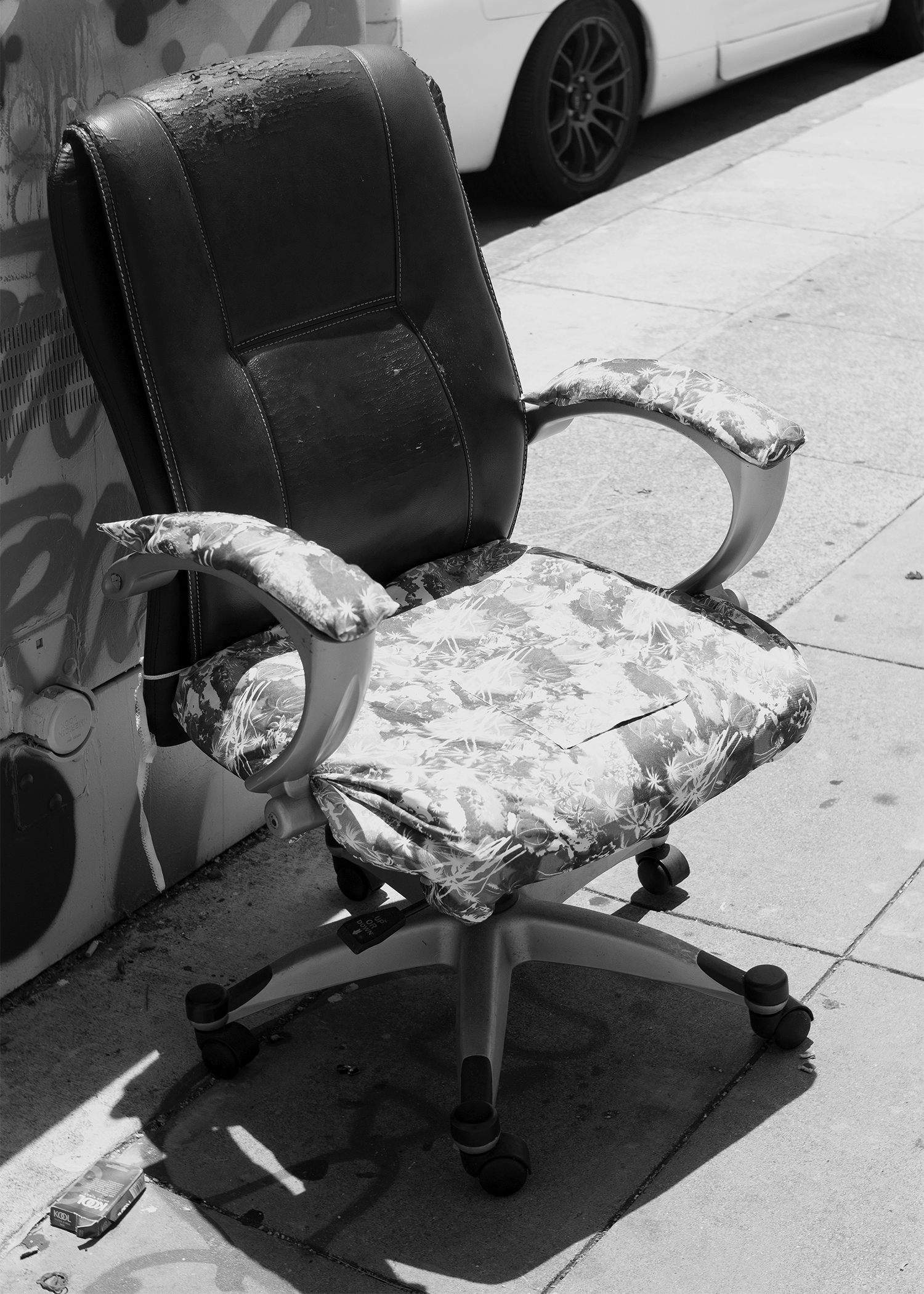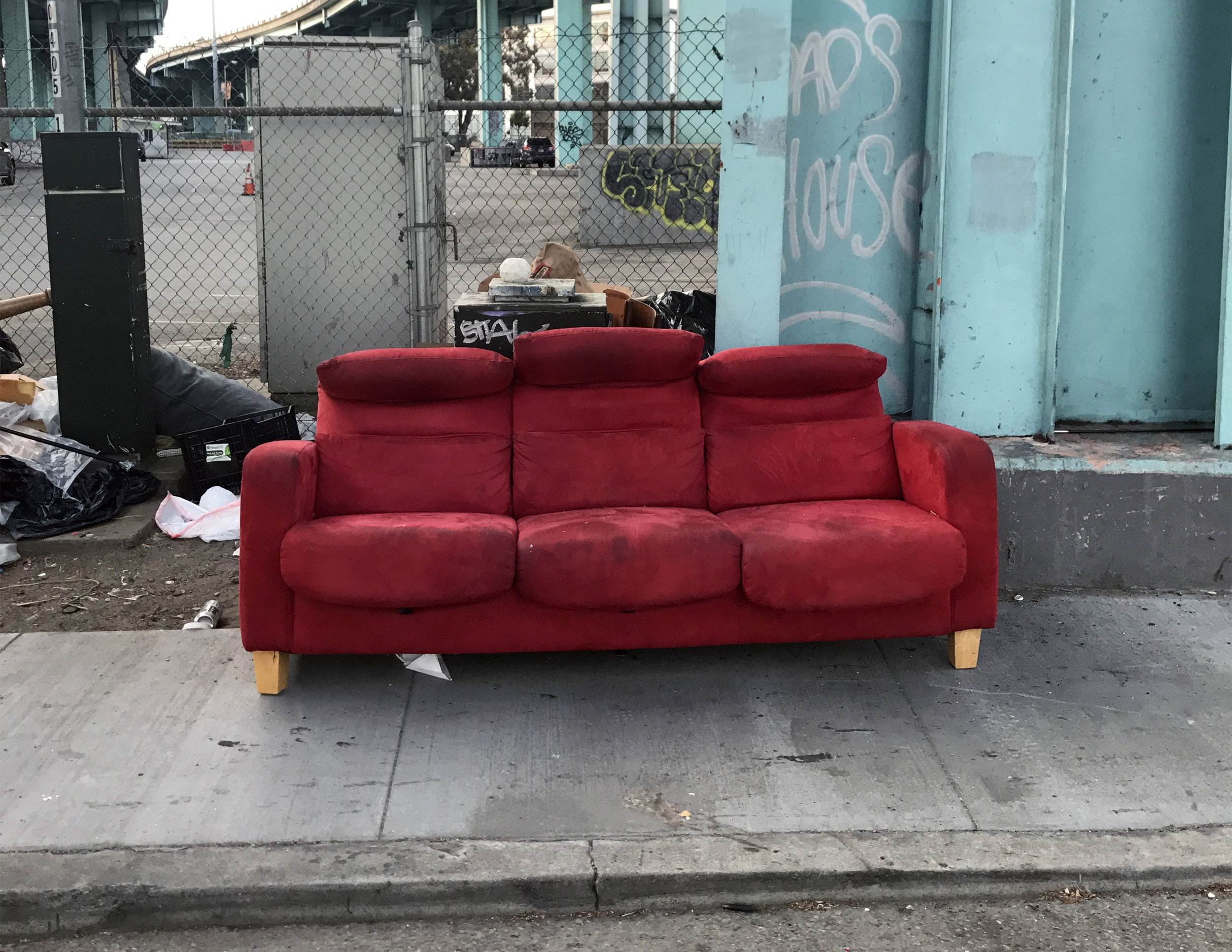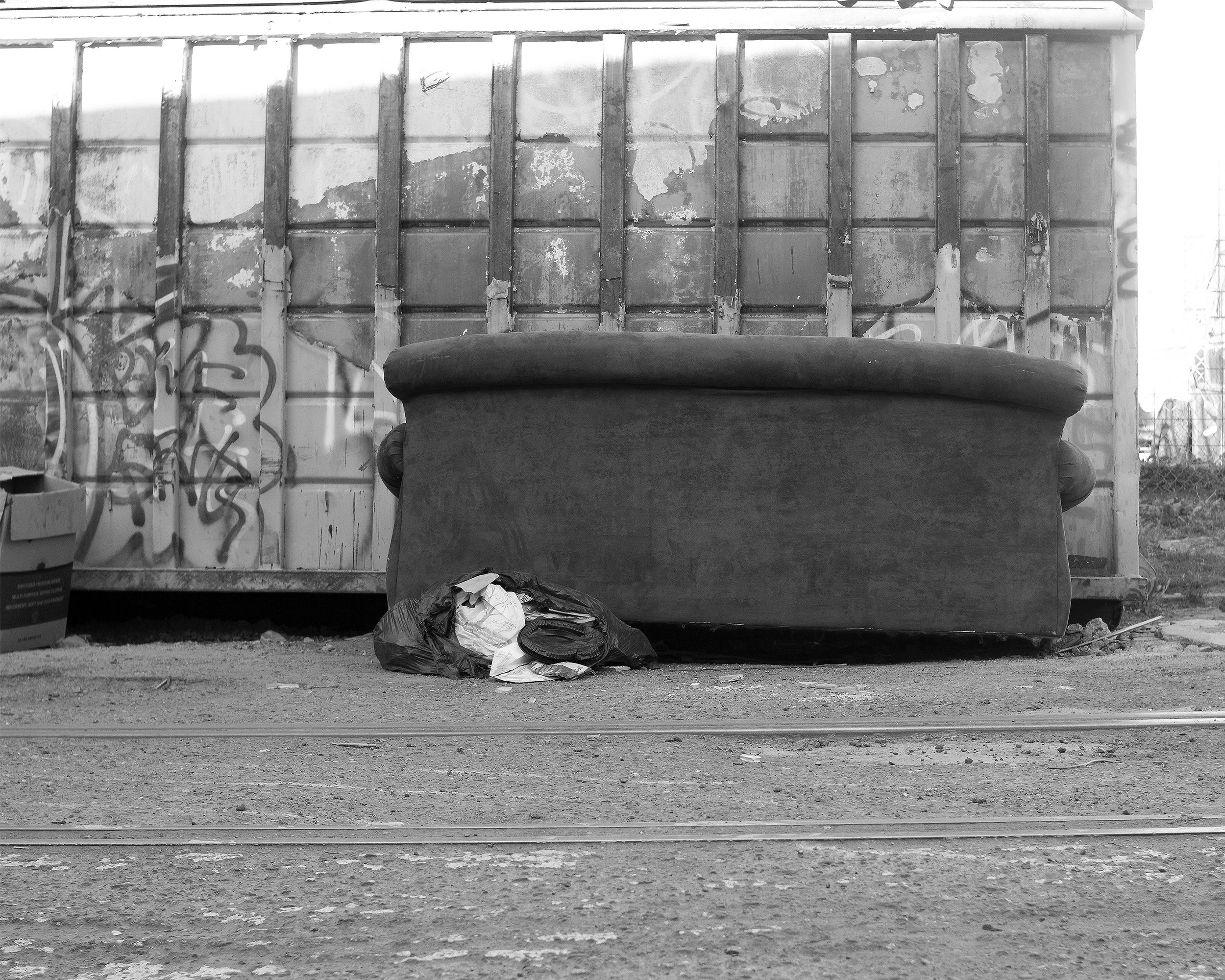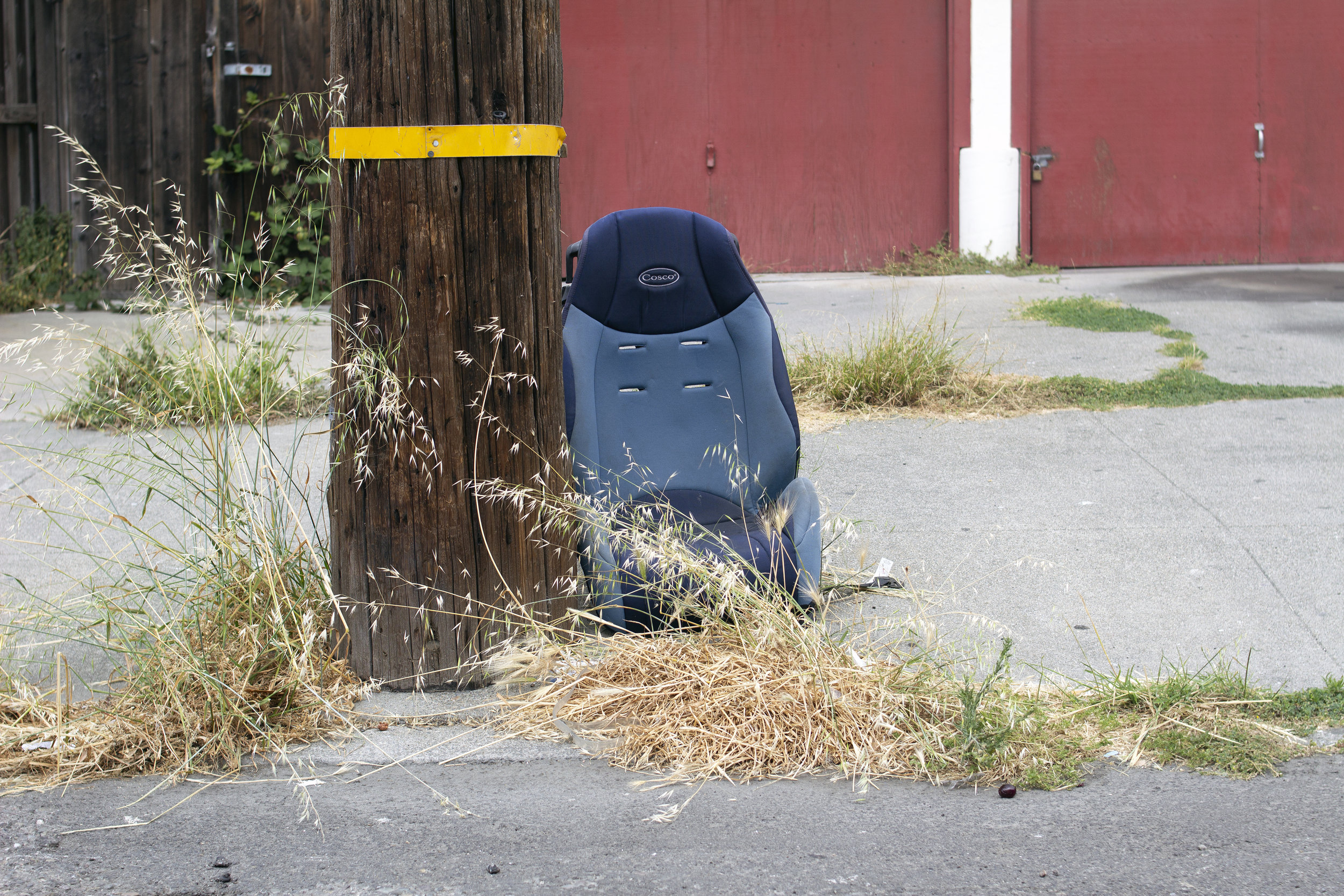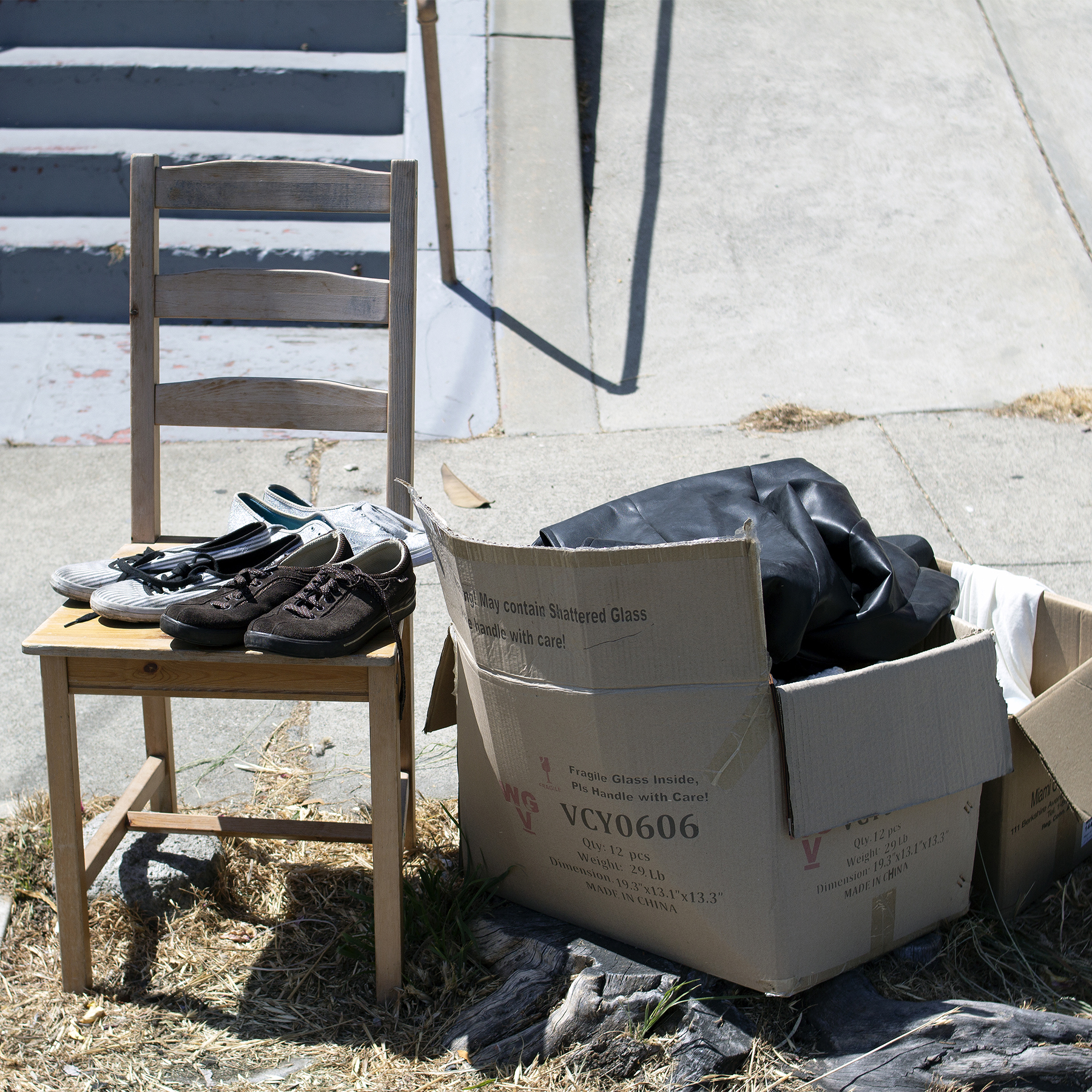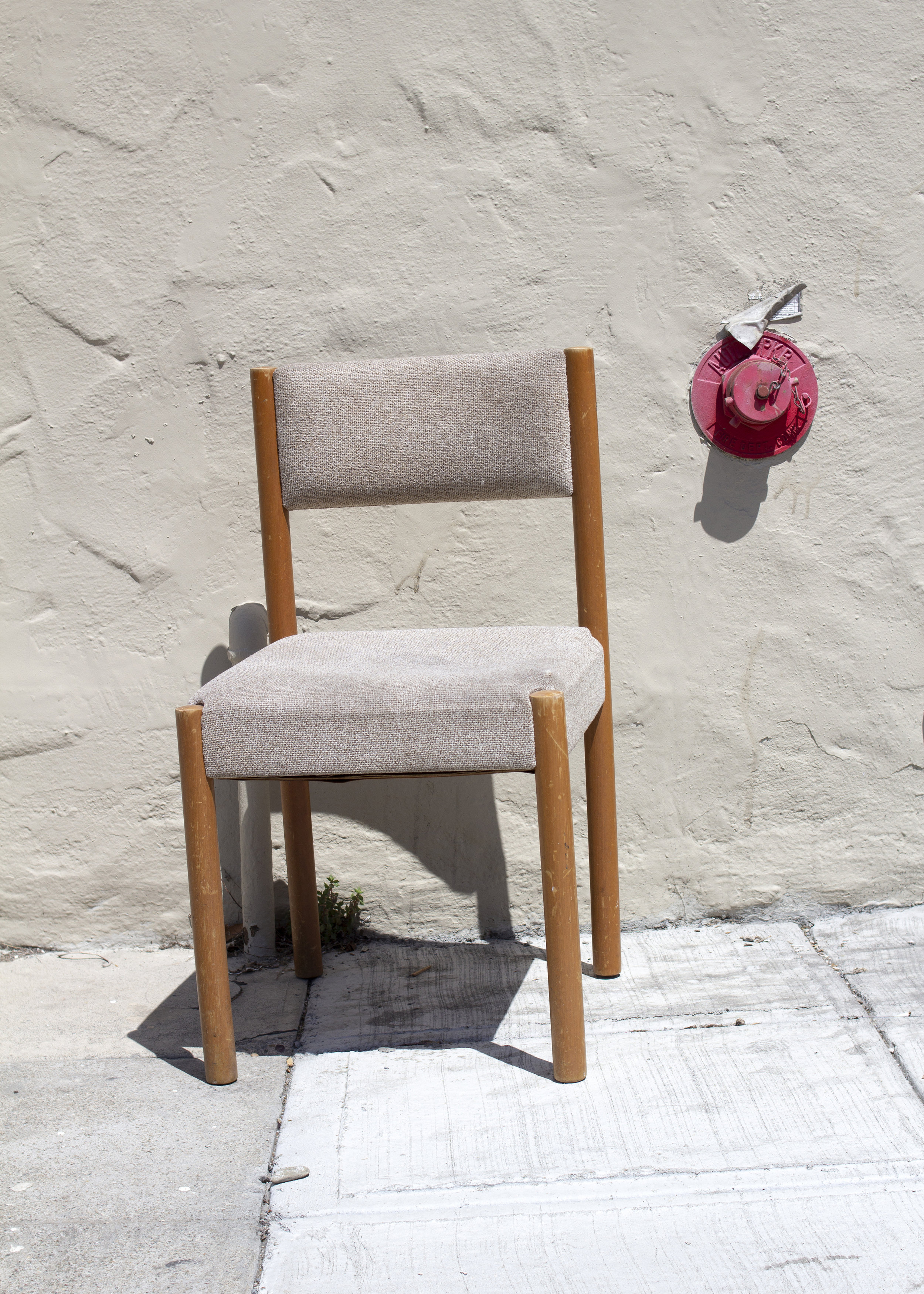(un)sunken place series/somewhere in the unfinished
Chairs placed in front of homes, in a way that suggests continued use — evocative of the lives inside who come outdoors to enjoy the weather or be in the company of others — can be visual representations of a city.
Stoop life.
Porch sitting.
Block parties and barbecues signal the aesthetics of a community.
What was once a space for gathering, to be among one’s neighbors in rituals of belonging, is now a place where one bears witness to the transformation of their hood into something else. Chairs abandoned in front of a home or apartment building sit as evidence of the gentrification process underway in Black and Brown communities throughout the country, particularly in Oakland. Commuting around the city, chairs, sofas, child seats and more are the castaways of individuals and families who’ve moved away, the latest in a trail of people whose arrival (and departure) contribute to devastating displacement.
Some, having moved to the Bay Area for their careers, leave behind what was always temporary housing for them. While for long-time and generational residents, who called Oakland home before it became the “West Coast Brooklyn,” for them, it will never be a permanent refuge again.
“Oakland stands at the center of a perfect storm” PolicyLink, a national research and action institute for advancing racial and economic equity, states in a brief about the city’s ongoing housing/displacement crisis.* The Bay Area’s surrounding economy is fueling the overwhelming displacement of Black families. While a record 150,000 new jobs are slated to be added to the East Bay’s economy by 2020, neither housing production nor affordable housing has mirrored the expected growth. As a result, housing and rental costs have increased and Oaklanders are being priced out, with Black and Brown families enduring the highest cost burdens per household. According to PolicyLink’s research 34,000 Black residents were “lost” from the City of Oakland, a 24 percent decline, between 2000-2010.*
In turn, each seat is a reminder — its presence tied to the absence of a body — that some Black lives don’t live here anymore.
Excerpt: “notes from somewhere in the unfinished”
